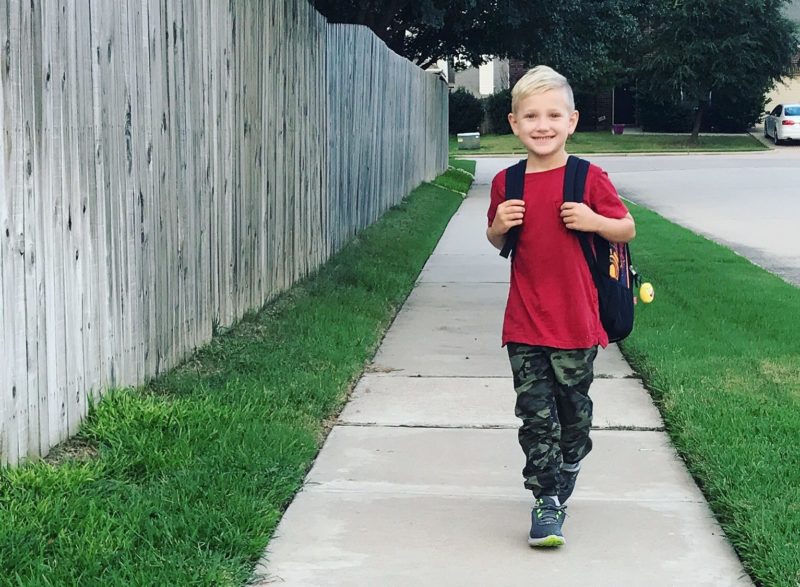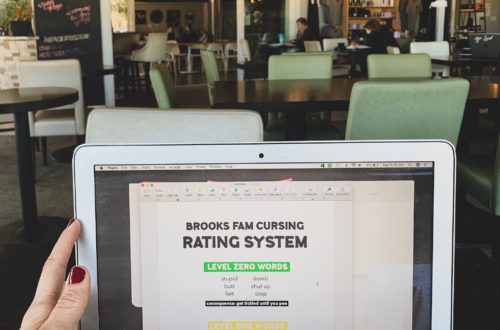The Great Physical Digital Divide
…is this thing still on?
One of the most frequent questions I hear from parents of teenagers regarding social media is how to monitor their child’s online activity.
How do I know what apps they use? How much involvement is too much? Isn’t “monitoring” an invasion of their privacy?
Great questions. Tricky subject.
Oh, and also? I really have no idea.
I don’t know how much monitoring is too much. I don’t know what age your child is ready for what apps. I don’t know what site your child spends most of his or her time on.
I think it’s a case-by-case, kid-by-kid conversation. Age plays a big role in these decisions, as does gender.
I can’t give you a list of specific rules, but here’s what I do know:
It’s critical for you to be involved, on some level, in their digital life.
…that’s vague and highly unmotivating.
Let me put it another way.
There probably isn’t a single parent out there who has given his or her son a subscription to Playboy for his 12th birthday.
There probably isn’t a single parent out there who has let his or her 13 year old daughter roam the city alone at night passing out headshots, asking for a 1-10 rating of her beauty.
And yet.
There are a whole lot of parents out there who have armed their 12 year old son or their 13 year old daughter with an unrestricted smartphone and unfiltered wifi. No game plan, no boundaries.
And it can be the exact. same. scenario.
Like my 14 year old friend who often retweets from sexually-charged Twitter accounts geared towards 20-somethings. Accounts that provide an exceptionally narcissistic, unrealistic view of relationships and create expectations for her future husband to look like David Beckham and spend an average of $500 a week on lingerie for her at Victoria’s Secret. (You know, for her perfectly toned size 00 body.)
Or my 15 year old friend who Facetimes his girlfriend until the wee hours of the morning, a perk of keeping his phone in his room all night because he “uses it as an alarm to wake up for school”. (Good news – $2.88 + your local Walmart = a standard alarm clock. Problem solved.)
Or my 13 year old friend whose parents don’t approve of the way a few primetime TV shows portray sex, yet allow her unmonitored access to Netflix. (Hello, Grey’s Anatomy and Orange is the New Black marathons. Because you teach such healthy sexual practices.)
Or my 16 year old friend who is often texting and Snapchatting men she has never met, hoping their virtual love makes her feel more beautiful in real life.
We’re experiencing a double standard of epic proportions.
Have you wondered why today’s teens seem…sexier? More daring? More knowledgeable?
I have an idea.
We hesitate sending them on an out-of-state school trip with chaperones we don’t really know, yet happily let them sleep each night beside a miniature computer with unguarded access to the world.
We meet the friends whose houses our kids spend time at after school, yet resist asking about the hundreds of Instagram and Twitter friends they spend hours with each week.
Do you see the discrepancies?
The virtual can have a severe impact on the physical.
Really, our teens don’t distinguish between the two worlds. Their virtual is their physical, their physical is their virtual. It’s one in the same.
It’s time to start parenting equally in both.
That doesn’t mean every text needs to be read. (Please don’t.) It doesn’t mean every follow and comment and hashtag they make needs to be controlled.
But it does mean parents cannot be entirely checked out of the digital world.
It means that our kids cannot have free, 24/7 reign over the entire internet because we are too busy or overwhelmed or uninvested to do anything different. It means that we cannot sit by and let the interwebs teach our 14 year olds everything they never needed to know about life, love, and relationships.
It means that we can feel confident in having the same conversations and asking the same questions and setting the same boundaries for their phones as we would for their physical world. It means we strive to be involved digitally to the extent we are physically – that we know generally where our kids spend their time and with whom. Anything less is a disservice to them, really.
It’s time to be present in both, parents. We can do this. Our teens are counting on us.
If you’re completely bumfuzzled* as to where to start, here are two of my favorite resources:
- OpenDNS is a free, customizable filter for your wifi router. I like it because free. But also because it sets an overarching filter on each device that accesses your router (like a teen friends’ iPhone, xbox, etc.), in addition to the specific filters you set on each individual device (which I also recommend).
- iParent.tv is a great site for learning about specific apps and age-appropriate suggestions
(*my recently-rediscovered, new favorite word that is oddly hard to work into everyday conversation. tips appreciated.)




One Comment
Lennie
Wise words of warning and encouragement! Thank you.